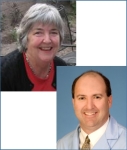The Fourth of July is Independence Day for the United States of America. Independence is about individual freedoms and liberties and we celebrate these annually on the 4th of July. In healthcare, telemedicine, telehealth, and mobile health (mHealth) technologies can help us maintain or improve our health more independently by enabling us to track our health, and access and connect with expert care from where we are. For example:
If you’re sick and have no way to get to a doctor in person, telemedicine gives you the freedom to see a doctor anywhere and anytime from a smartphone, tablet or computer with Internet access.
If you have a chronic health condition that can be monitored remotely, remote patient monitoring, a form of telehealth, gives you the freedom to spend more quality time at home and less time on the road and in your doctor’s waiting room.
Telemedicine, for consultations that do not require physical touch, may provide you with more physicians and healthcare providers to choose from as compared to seeing a physician or healthcare provider in person.
Telemedicine can play a life-saving or health-related-quality-of-life saving role in your care if you have an urgent or emergent medical need that your local hospital or clinic does not have the expertise to treat-on-site, but that they do have a telemedicine capability available to link to a specialist that can guide your treatment remotely. Treatment of stroke via telemedicine, known as “telestroke”, is an excellent example of the power of telemedicine to speed critical neurologist services to patients in locations that do not have a neurologist on site. Telestroke utilizes digital imaging and video conferencing to allow a distant neurologist to assess and diagnose a patient suffering from an apparent stroke. For patients suffering a stroke due to a “blood clot” in the brain, administration of a clot-busting drug called tPA within the initial hours following onset of the stroke can greatly reduce or even prevent the negative effects of the stroke.
Numerous health and fitness apps are available to help you find a nearby gym where you can work out, provide you with recipes for healthy meals, and monitor your success in achieving a healthy lifestyle. FDA approved mHealth apps and wearable devices prescribed by your doctor are used to track your vitals or other health information allowing your doctor to see if your treatment regimen is effective and to make adjustments as needed.
If you are a physician or other healthcare provider, telemedicine-secure video conferencing technology can allow you to connect with your patients at their homes, enable you to participate in chart rounds and consult with peers and specialists about patient care. And you may have fewer no-shows, because it’s so much easier for your patients to keep an appointment.
So there you have it, telemedicine, telehealth and mHealth can enable greater independence and accessibility for patients seeking healthcare, can enable increased patient engagement and provider visibility into patient health status, and may even enable critical specialty care to be delivered within time windows where in-person specialty care is not physically possible.
We hope you and your loved ones enjoyed a happy Independence Day. We encourage you to learn more about telemedicine, telehealth and mHealth healthcare services that may be available to you and yours to increase your “tele-independence.”

